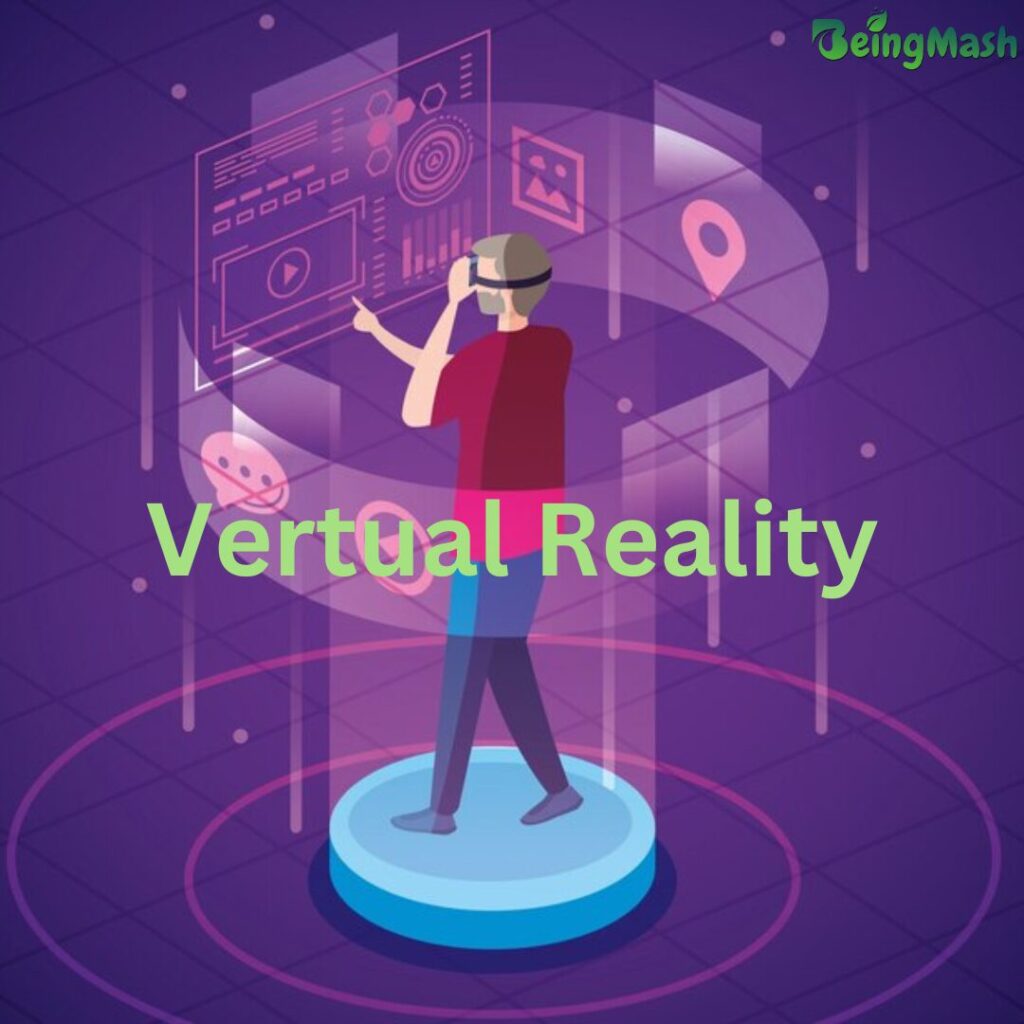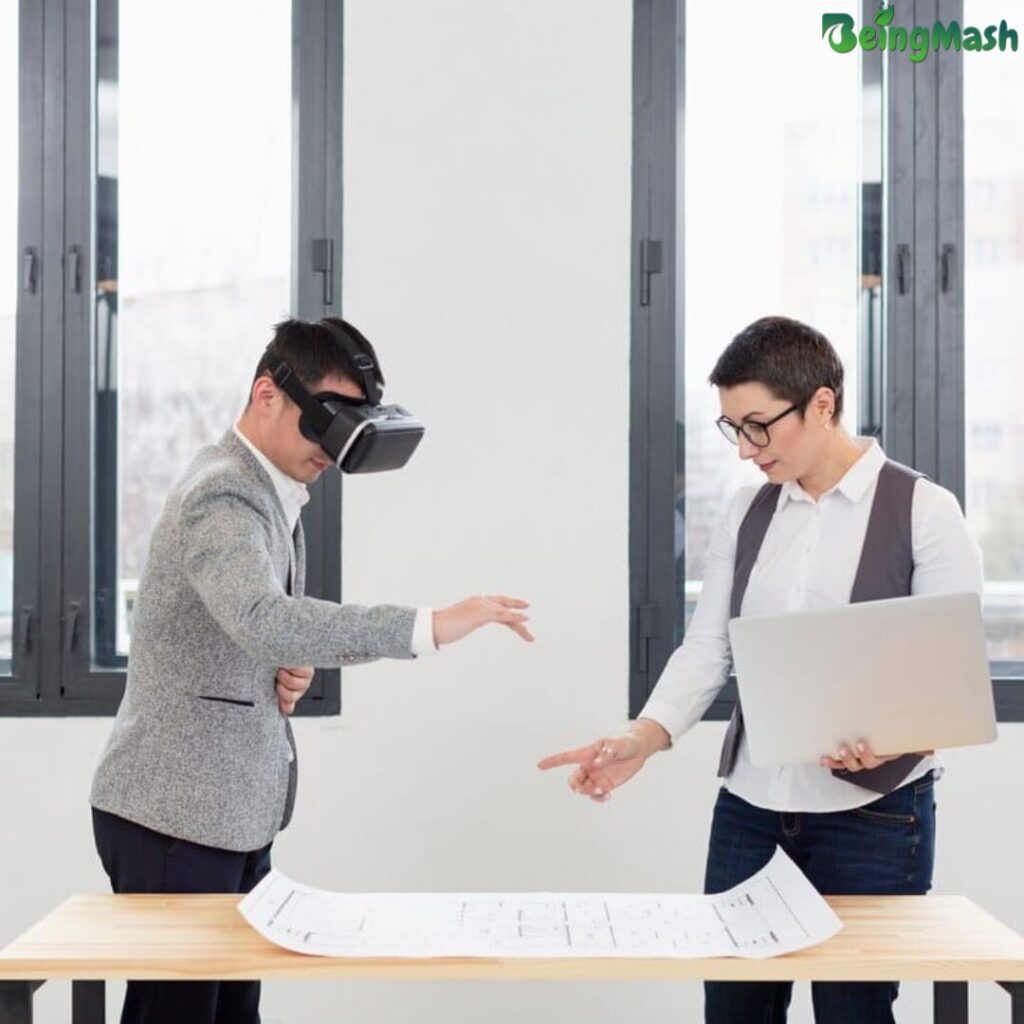In today’s rapidly evolving digital landscape, staying ahead of the curve is paramount for any marketer. With the advent of virtual reality (VR) technology, the possibilities for immersive marketing experiences have expanded exponentially.
From engaging consumers in virtual environments to revolutionizing product demonstrations, VR is reshaping the way brands connect with their audiences.
In this blog post, we’ll delve into the transformative potential of virtual reality in digital marketing and explore strategies to leverage this exciting technology effectively.

Understanding Virtual Reality Technology
Virtual reality technology creates immersive, three-dimensional experiences that simulate real-world environments. By wearing a VR headset, users are transported to virtual spaces where they can interact with digital elements in a lifelike manner.
This technology has applications across various industries, from gaming and entertainment to healthcare and education.
In the realm of marketing, VR offers unique opportunities to captivate audiences and leave a lasting impression.
Enhancing User Engagement
One of the key advantages of VR in digital marketing is its ability to enhance user engagement.
Traditional marketing channels often struggle to capture and retain audience attention amidst the noise of online content. However, VR experiences offer a novel and captivating way to connect with consumers on a deeper level.
By immersing users in branded environments or interactive storytelling narratives, marketers can create memorable experiences that forge emotional connections with their audience.
For example, imagine a virtual tour of a luxury resort where potential guests can explore the grounds, interact with amenities, and envision themselves enjoying a dream vacation.
Such immersive experiences not only showcase the brand’s offerings but also evoke a sense of excitement and desire in the viewer.
Personalized Product Demonstrations
Another compelling use case for VR in digital marketing is personalized product demonstrations.

Traditional methods of showcasing products through static images or videos can be limiting in terms of conveying the product’s features and functionality.
With VR, marketers can offer virtual demonstrations that allow users to interact with products in a simulated environment.
For instance, a furniture retailer could create a VR experience where customers can virtually place different pieces of furniture in their living room to see how they look and fit together.
This interactive approach not only facilitates better decision-making for the consumer but also provides valuable insights into their preferences and behavior for the marketer.
Optimizing for SEO
Now, let’s discuss how to optimize your VR-focused content for search engines. Incorporating the keyword “virtual reality technology” strategically throughout your blog post is essential for improving its SEO performance.
By including the keyword in the title, headers, and body text, you signal to search engines that your content is relevant to users searching for information about virtual reality technology.
Additionally, consider creating descriptive meta tags and alt text for any images or multimedia content you include in your post.
These elements provide search engines with additional context about your content, further enhancing its visibility in search results.
virtual reality technology represents a game-changing opportunity for digital marketers to create immersive and engaging experiences that resonate with their audience.
By leveraging VR to enhance user engagement, personalize product demonstrations, and optimize for SEO, brands can differentiate themselves in a crowded online marketplace and stay ahead of the competition.
As we continue to push the boundaries of technology and innovation, embracing VR in digital marketing is not just a trend but a strategic imperative for brands looking to future-proof their marketing efforts.
So, are you ready to take the plunge into the virtual realm and revolutionize your digital marketing strategy? The possibilities are limitless, and the future is waiting to be explored.
Virtual Reality Technology: Applications
Virtual reality (VR) is a technology that creates an immersive experience that simulates a user’s physical presence in a setting generated by computer software. VR applications are rapidly growing and being developed in a variety of fields. Here are some of the most common applications of VR:

- Entertainment: VR is widely used in the entertainment industry, especially in gaming. VR headsets allow gamers to step into the game world and experience it in a whole new way. pen spark
Opens in a new window www.reddit.com VR headset being used for gaming - Education: VR can be a powerful tool for education, allowing students to experience places and things that they would not otherwise be able to. For example, students can take virtual tours of historical landmarks or travel to different parts of the world. Opens in a new window VR headset being used for education
- Healthcare: VR is being used in healthcare for a variety of purposes, including pain management, phobias treatment, and physical therapy. For example, VR can be used to help people with phobias confront their fears in a safe and controlled environment. Opens in a new window VR headset being used for healthcare
- Architecture and design: VR can be used to create architectural and design visualizations that allow clients to see their ideas come to life before construction begins. This can save time and money, and it can help to ensure that the final product meets the client’s expectations. Opens in a new window VR headset being used for architecture and design
- Training: VR can be used to provide realistic and immersive training simulations for a variety of industries, such as aviation, manufacturing, and the military.
- VR training can help to improve safety, reduce costs, and increase efficiency. Opens in a new window VR headset being used for training
These are just a few of the many applications of VR. As VR technology continues to develop, we can expect to see even more innovative uses for this powerful tool.
Virtual Reality Technology; what?
Virtual reality (VR) is a technology that creates a simulated environment that feels real. It does this by using computer-generated imagery and special headsets or rooms to trick your senses into thinking you’re in a different place. Virtual Reality (VR) is a computer-generated simulation of an immersive, three-dimensional environment that can be interacted with and explored by users, typically through the use of specialized electronic equipment such as VR headsets or goggles.
Here’s a breakdown of VR:
- Simulated experience: VR creates a world that isn’t physically there. It’s built by computers and can be anything you can imagine, from a fantasy land to a historical recreation.
- Immersive: VR headsets or rooms put you right in the middle of the simulation. You can see it, hear it, and sometimes even feel or interact with it, making you feel like you’re truly there.
- 3D near-eye displays: VR headsets use special screens to project separate images for each eye, creating a three-dimensional effect that enhances realism.
- Pose tracking: VR systems track your head movements and sometimes your body movements to adjust the virtual environment accordingly. As you turn your head, the view changes just like it would in the real world, making the experience more believable.
VR is used for a variety of purposes, including:
- Entertainment: VR gaming lets you step into the game world and experience it firsthand.
- Education: VR can take you on virtual field trips or let you explore historical events in an immersive way.
- Training: VR simulations can be used to train for dangerous or complex situations in a safe environment.
- Business: VR can be used for product design, architectural visualizations, and even virtual meetings.
VR technology is still evolving, but it has the potential to revolutionize the way we learn, work, and play.
